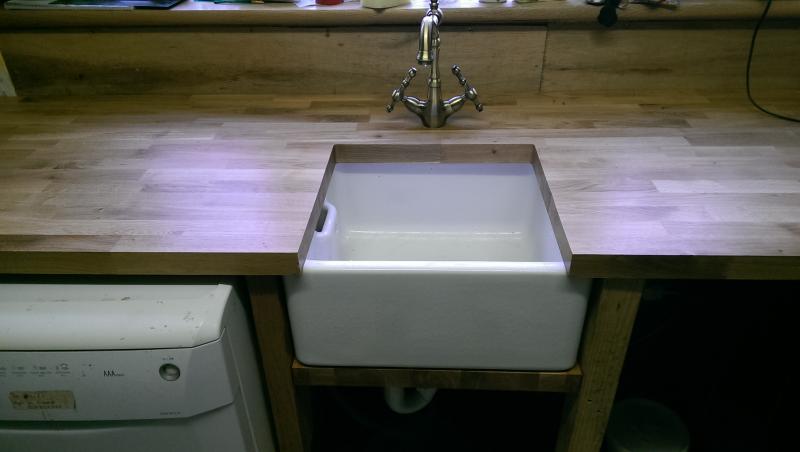D
Deleted member 174758
Remember that you'll still need to pull the joints together. I'd suggest putting a groove in either side of the joint (router groover or biscuit joint set) and using something like a loose plywood tongue or loose biscuits to locate vertically, sealing the edge with a small amount of clear silicone and then pulling the joint together with standard worktop dog and bone joiners.... square edge definatly, if i dont need male female joints great.
You'd be better off using the saw with a guide to cut a couple of millimetres over length then trimming to size with the router and a guide TBHCould i use router and guide to cut length to size?[
Not a million miles. As you already have a circular saw I'd revise my statement above; set-out the cut-out on the underside, rout-out the drip groove set-in a little way from the edge using a small core box bit or a small straight bit (see drawing below), drill-out the corners, make the saw cuts in from the edge to the corners with the circular saw slightly oversize so you leave a millimetre or two to trim back, make the back cut-out (corner to corner) with the jigsaw and a fresh coarse blade being very careful that you watch for blade deflection and keep to the line and finish into the corners with a hand saw. Lastly fix your jig the underside and trim the edges with the router. All the jig is in reality is pieces of 2 x 1 planed softwood pinned in place (being underneath the damage will be hidden when you install)Could i make a jig for sink cutout i wonder? I'm guessing two guide rails screwed onto underside of worktop. Or am i way off there
Best bought-in. Needs to be packed up a few millimetres at the far end (away from the cut-out) so that you get fall towards the sink. Use with a plunge router, 30mm guide bush and appropriate sized core box bit. The jigs I've pointed to are about the cheapest out there - they are effectively "one shot" but for the more durable ones you are at £100I have no idea how to do grooves, and would welcome any tips, can i buy jig for this?.
A drip groove is a small groove on the underside of a timber overhang, near to the edge, which stops water running underneath. It helps prevent rotting. Most often noticed on window sills:Drip groove? I have no idea what that is, could you clarify please.
Untitled
- Deleted member 174758
- 1
Note that the use of a drip groove means that you need to have an overhand of circa 20 to 25mm over the sink opening. It's also a good idea to have a drip groove running beneath the front edge of the worktop - this is actually done on some better quality commercially available llaminate worktops such as the Duropal ones










